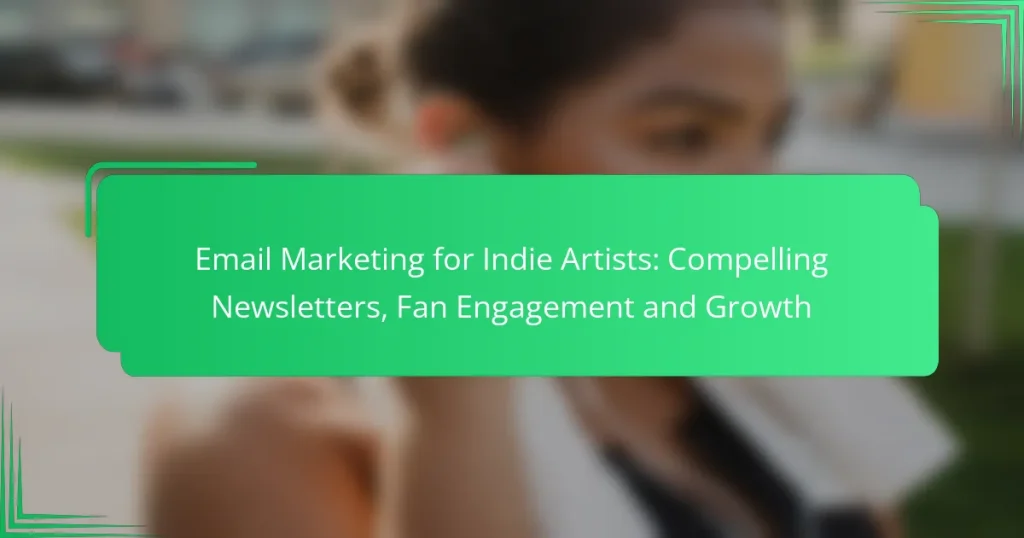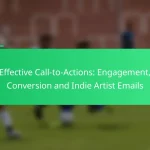Email marketing is a powerful tool for indie artists looking to connect with their fans and promote their music. By crafting compelling newsletters that feature engaging content, personalized messages, and striking visuals, artists can foster deeper connections and drive growth. Additionally, utilizing effective email marketing tools can streamline the process, making it easier to build and maintain a loyal fanbase.
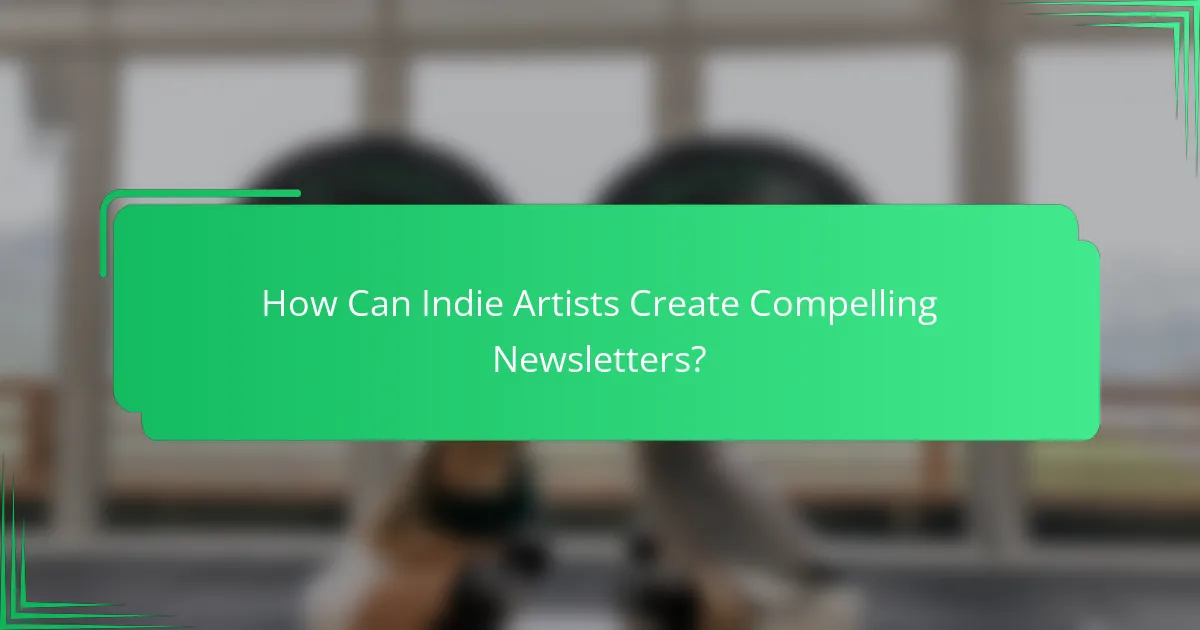
How Can Indie Artists Create Compelling Newsletters?
Indie artists can create compelling newsletters by focusing on engaging content, personalized messages, and strong visuals. These elements help capture the attention of fans and foster a deeper connection, ultimately driving engagement and growth.
Engaging subject lines
Engaging subject lines are crucial for increasing open rates. They should be concise, intriguing, and relevant to the content of the newsletter. For example, using questions or creating a sense of urgency can entice readers to click.
A/B testing different subject lines can help identify what resonates best with your audience. Aim for a mix of creativity and clarity to ensure that your subject lines stand out in crowded inboxes.
Personalized content
Personalized content significantly enhances reader engagement. Use subscriber data to tailor messages based on their preferences, past interactions, or location. For instance, mentioning a fan’s name or suggesting events based on their city can make the newsletter feel more intimate.
Consider segmenting your audience into groups to send targeted content that aligns with their interests. This approach can lead to higher response rates and a more loyal fan base.
Visual storytelling
Visual storytelling is an effective way to convey your message and showcase your artistry. Incorporate images, videos, and graphics that reflect your brand and music style. High-quality visuals can evoke emotions and make your newsletter more memorable.
Use a consistent color scheme and design elements that align with your overall branding. This consistency helps create a cohesive experience for your readers and reinforces your identity as an artist.
Call-to-action strategies
Strong call-to-action (CTA) strategies are essential for guiding your audience toward desired actions. Whether it’s encouraging fans to listen to a new track, buy tickets, or follow you on social media, clear CTAs help drive engagement.
Make your CTAs prominent and action-oriented. Phrases like “Listen Now” or “Join the Fan Club” can motivate readers to take the next step. Additionally, consider placing multiple CTAs throughout the newsletter to capture interest at different points.
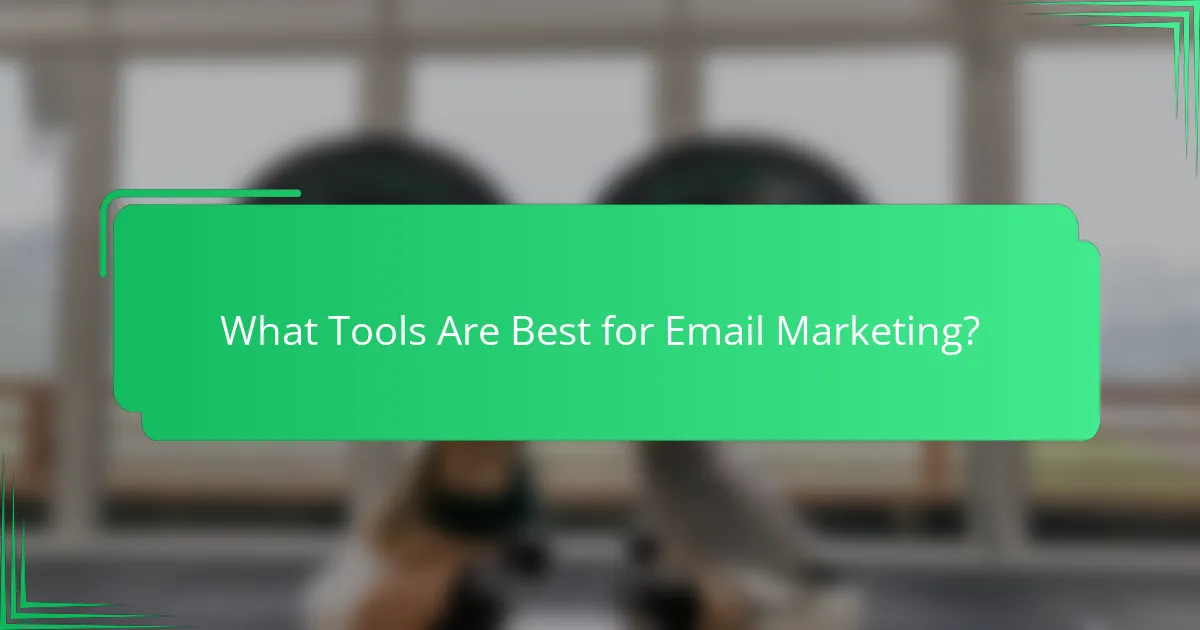
What Tools Are Best for Email Marketing?
For indie artists, effective email marketing tools can significantly enhance fan engagement and growth. The best tools offer user-friendly interfaces, robust features, and scalability to meet the unique needs of independent musicians.
Mailchimp features
Mailchimp is a popular choice for email marketing, known for its comprehensive features that cater to various user levels. It offers customizable templates, automation options, and detailed analytics to track campaign performance. Additionally, Mailchimp provides an easy-to-use drag-and-drop editor, making it accessible for those without design skills.
One key feature is the segmentation capability, allowing artists to target specific groups within their fan base. This can lead to higher engagement rates, as messages can be tailored to different audience interests.
ConvertKit benefits
ConvertKit is designed specifically for creators, making it a strong option for indie artists. Its focus on simplicity and automation helps streamline the email marketing process. ConvertKit allows users to create landing pages and sign-up forms easily, which can help grow their email list effectively.
Another advantage is its tagging system, which helps in organizing subscribers based on their interactions. This enables more personalized communication, enhancing the connection between artists and fans.
Substack for indie artists
Substack offers a unique platform for indie artists to share newsletters and monetize their content. It allows creators to build a direct relationship with their audience through subscription-based models, where fans can support artists financially while receiving exclusive content.
With Substack, artists can easily publish posts, share updates, and engage with their subscribers through comments. This platform is particularly beneficial for those looking to create a community around their music and insights, fostering deeper connections with fans.
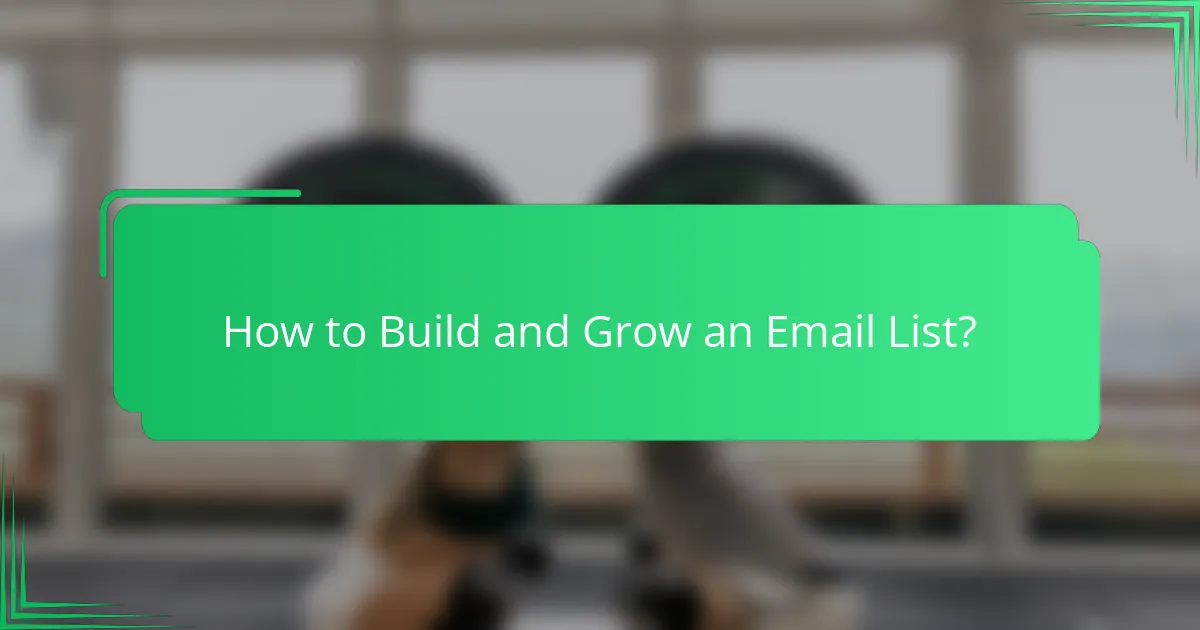
How to Build and Grow an Email List?
Building and growing an email list is essential for indie artists to connect with fans and promote their music effectively. Focus on creating value for your audience through engaging content and incentives that encourage sign-ups.
Lead magnets
Lead magnets are incentives offered to potential subscribers in exchange for their email addresses. These can include exclusive content, such as free downloads of songs, behind-the-scenes videos, or access to special events. The key is to provide something that resonates with your audience and enhances their connection to your music.
Consider using tiered lead magnets to cater to different segments of your audience. For instance, offer a simple free track for new subscribers and a more comprehensive package, like an exclusive EP, for those who refer friends. This strategy can significantly boost your list growth.
Social media integration
Integrating your email list with social media platforms can amplify your reach and attract more subscribers. Promote your newsletter on platforms like Instagram, Facebook, and Twitter, highlighting the benefits of signing up. Use eye-catching visuals and clear calls-to-action to encourage followers to join your list.
Consider running social media campaigns or contests that require participants to sign up for your email list. This not only increases your subscriber base but also engages your audience in a fun and interactive way.
Website sign-up forms
Website sign-up forms are a direct way to capture email addresses from visitors. Place these forms prominently on your homepage, blog, or dedicated landing pages. Ensure they are easy to fill out and mobile-friendly, as many users access websites via their phones.
To increase conversions, keep the sign-up process simple and limit the information you request initially. A name and email address are often sufficient. You can always ask for more details later to personalize your communications.
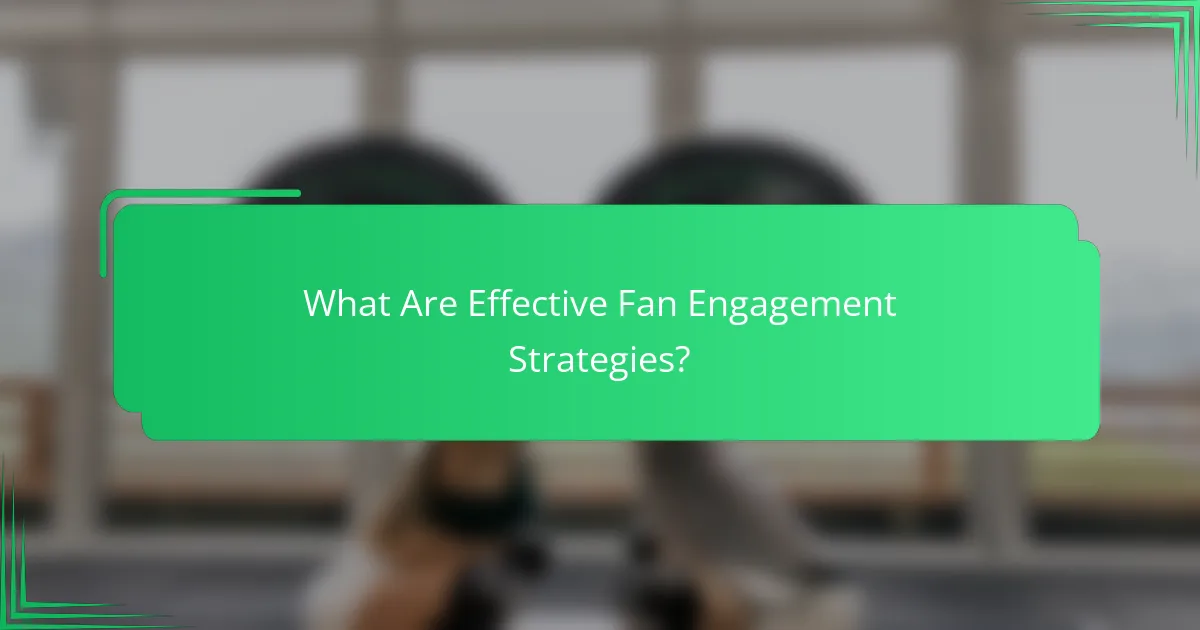
What Are Effective Fan Engagement Strategies?
Effective fan engagement strategies focus on building a strong connection between indie artists and their audience. These strategies enhance loyalty, encourage interaction, and ultimately drive growth through meaningful communication.
Exclusive content offers
Exclusive content offers create a sense of value for fans, making them feel special and more connected to the artist. This could include behind-the-scenes videos, early access to new music, or limited-edition merchandise.
To implement this, consider setting up a subscription model where fans can pay a small fee for exclusive content. Platforms like Patreon can facilitate this, allowing you to share unique experiences directly with your most dedicated supporters.
Fan feedback surveys
Fan feedback surveys are a powerful tool for understanding your audience’s preferences and expectations. By asking for input on your music, performances, or merchandise, you can tailor your offerings to better meet their needs.
Keep surveys short and focused, ideally under 10 questions, to encourage participation. Use platforms like Google Forms or SurveyMonkey to easily distribute and analyze responses, ensuring you act on the feedback received to show fans that their opinions matter.
Interactive polls
Interactive polls engage fans by inviting them to participate in decision-making processes, such as choosing the next single or album artwork. This not only fosters a sense of community but also makes fans feel invested in your artistic journey.
Utilize social media platforms like Instagram or Twitter to conduct quick polls. Aim for simple questions that can be answered with a click, and share the results to keep fans informed and involved in your creative direction.

How to Measure Email Marketing Success?
Measuring email marketing success involves tracking key performance indicators (KPIs) that reflect how well your campaigns engage your audience. Focus on metrics like open rates, click-through rates, and subscriber growth to gauge effectiveness and identify areas for improvement.
Open rates analysis
Open rates indicate the percentage of subscribers who opened your email, providing insight into how compelling your subject lines and sender reputation are. A typical open rate for the music industry can range from 15% to 30%, depending on your audience and content quality.
To improve open rates, consider A/B testing different subject lines and sending times. Avoid spammy language and ensure your emails are mobile-friendly, as many users check their emails on mobile devices.
Click-through rates
Click-through rates (CTR) measure the percentage of subscribers who clicked on links within your email. A healthy CTR typically falls between 2% and 5% for indie artists, reflecting how well your content resonates with your audience.
To enhance CTR, include clear calls-to-action (CTAs) and engaging visuals. Ensure that links are easy to find and that the content aligns with what subscribers expect based on your subject line.
Subscriber growth metrics
Subscriber growth metrics track how your email list expands over time, which is crucial for long-term engagement and success. Aim for a steady growth rate, ideally around 5% to 10% monthly, while also monitoring unsubscribe rates to maintain a healthy list.
To grow your subscriber base, offer incentives like exclusive content or discounts for signing up. Promote your newsletter on social media and during live performances to attract new fans.
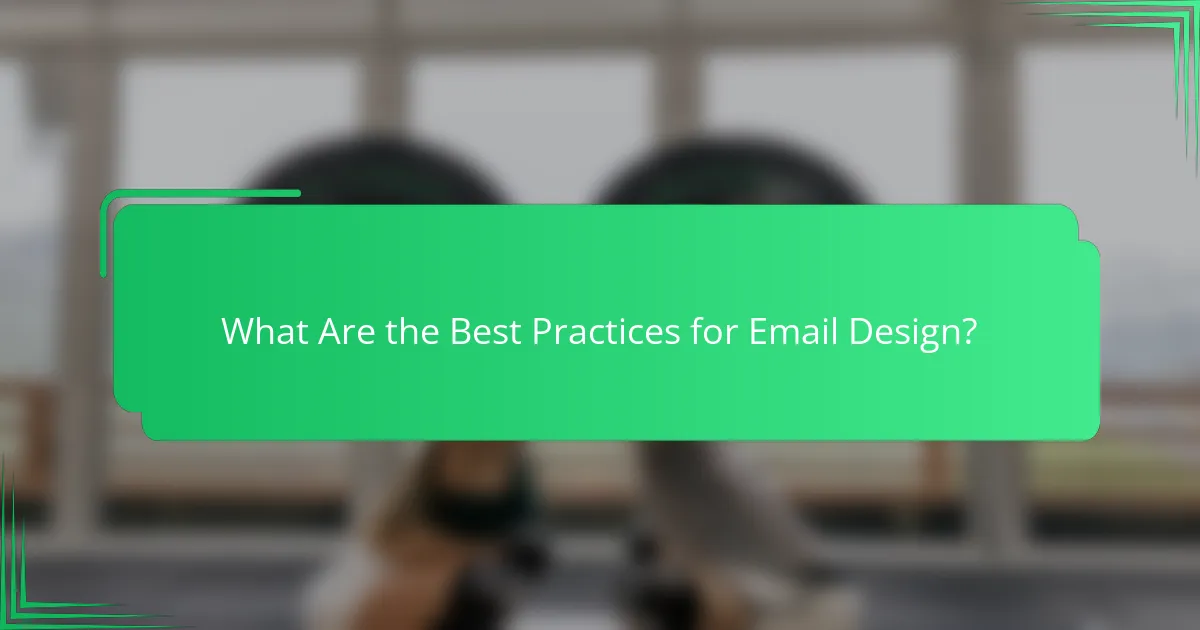
What Are the Best Practices for Email Design?
Effective email design enhances readability and engagement, ensuring that your content resonates with your audience. Key practices include maintaining a clean layout, using appealing visuals, and ensuring compatibility across devices.
Mobile responsiveness
Mobile responsiveness is crucial for email design, as a significant portion of users access their emails on smartphones and tablets. Ensuring your emails adapt to various screen sizes improves user experience and engagement rates.
To achieve mobile responsiveness, use flexible layouts that adjust to different devices. This can be done by employing responsive design techniques, such as fluid grids and scalable images. Aim for a single-column layout for mobile devices to simplify navigation.
Common pitfalls include using large images that don’t resize and overly complex designs that may not render well on smaller screens. Test your emails on multiple devices before sending to ensure they look great everywhere. Consider tools like Litmus or Email on Acid for comprehensive testing.
